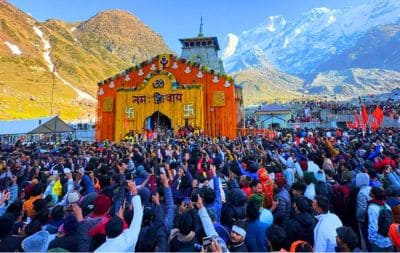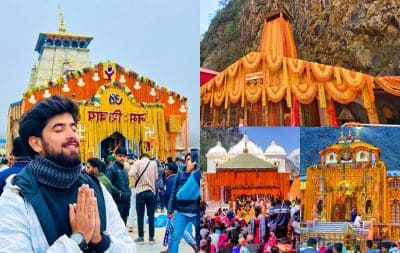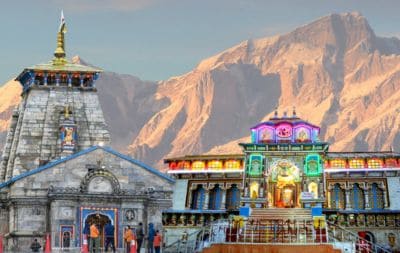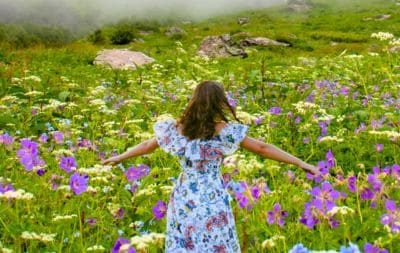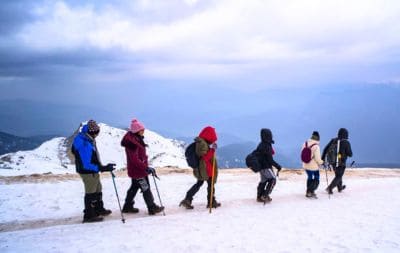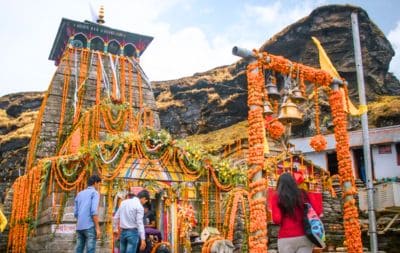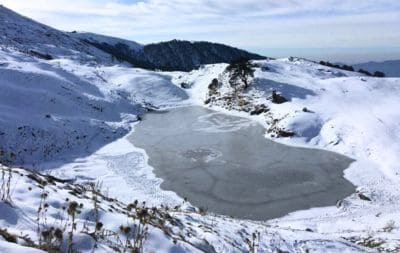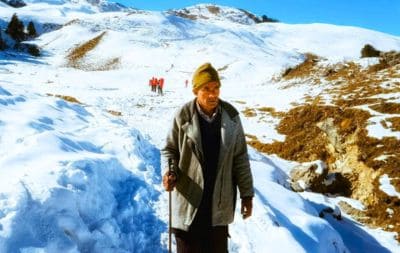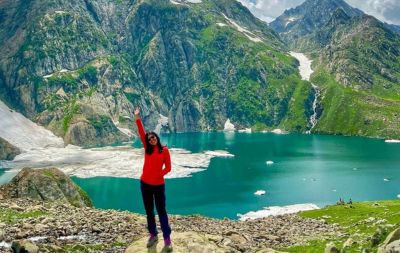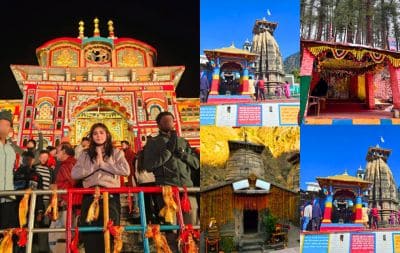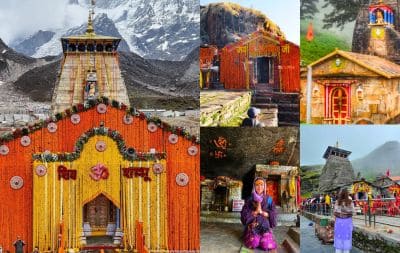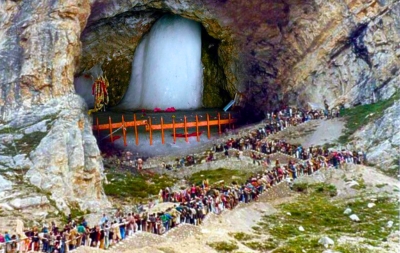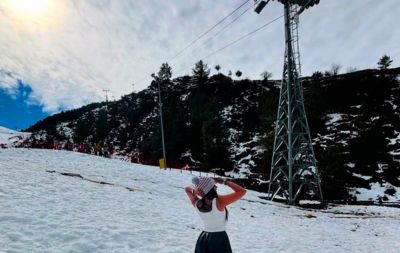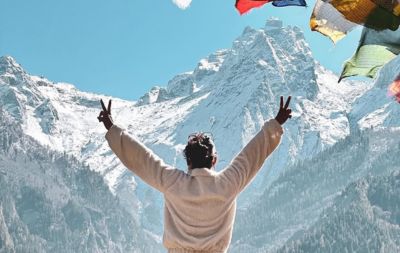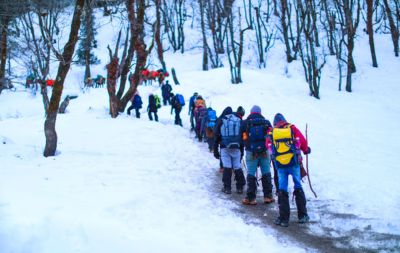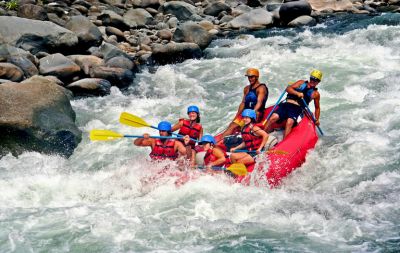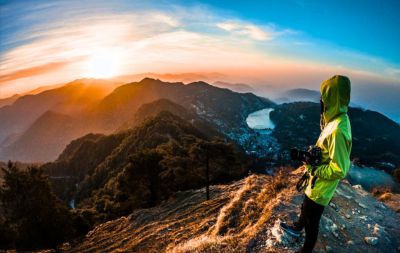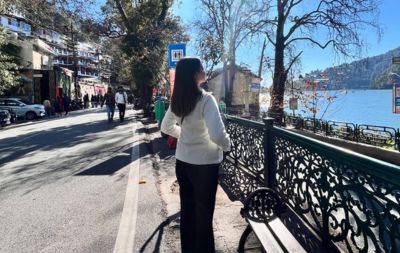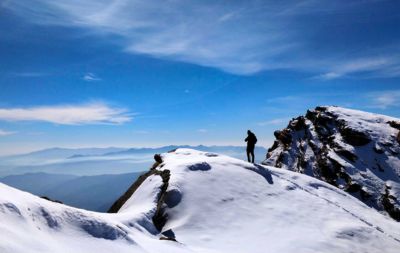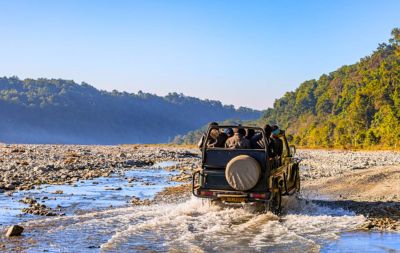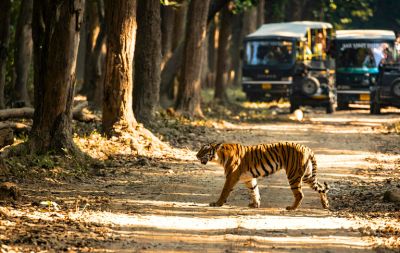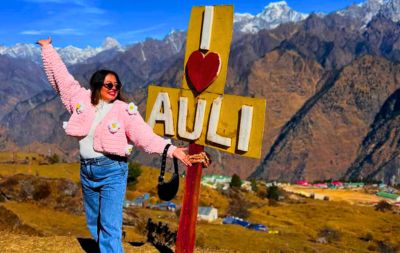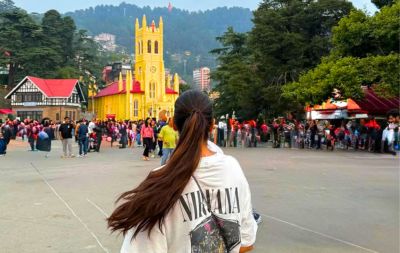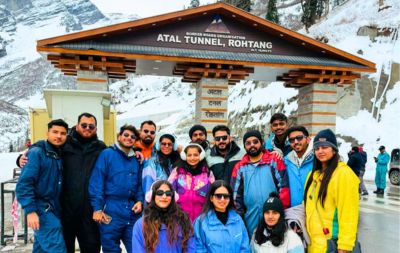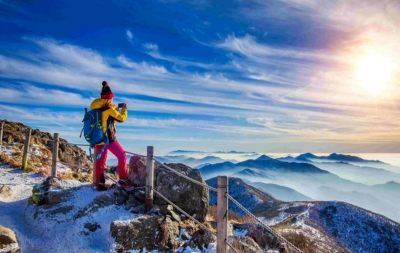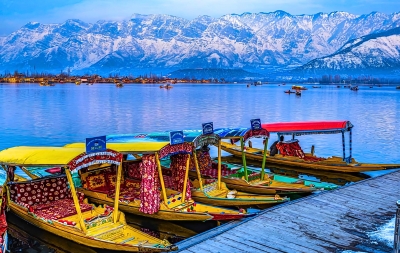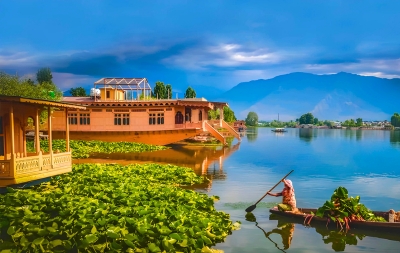



Tour Highlights
Inclusion/Exclusion
Inclusion in cost during the yatra:
Exclusion in cost during the yatra:
Panch Kedar Yatra The Spiritual Yatra of Lord Shiva in Himalayas
Panch Kedar Yatra is your way to deity adoration, power, and self-morphing. You trek through five significant temples devoted to the Lord Shiva across the awe arousing, steep High Himalayan terrain in Uttarakhand. It is believed that Lord Shiva came to sight at many places where he dodged the Pandavas who anticipated forgiveness following the war. Eventually, these five places were referred to as the Panch Kedar, that is, Kedarnath, Tungnath, Rudranath, Madhyamaheshwar, and Kalpeshwar.
The paths are taken by saints, yogis and others of many generations. It is very much possible today to get the same opportunity of experiencing divine strength, the beauty of the nature and the strengthening of the inner self in the Panch Kedar Yatra.
The Legend Behind Panch Kedar
The Mahabharata accounts the formation of the Panch Kedar Tour. At the end of the war, the Pandavas tried to get pardoned and blessings of Lord Shiva. Shiva felt agitated at the bloodshed and he took the shape of a bull and disappeared into the Garhwal Himalayas. The bull went underground as Bhima noticed his uncle and was about to capture him. Later at a later period its parts were scattered all over the region with the hump at Kedarnath, arms at Tungnath, face at Rudranath, navel at Madhyamaheshwar and hair at Kalpeshwar.
There is no similarity between the temples which have a different structure and all of them, collectively, are referred to as the Panch Kedar Yatra which is a special religious pilgrimage in India.
Five deities of Panch Kedar
1. Kedarnath- The Eternal Jyotirlinga
Kedarnath is the most known of the Panch Kedar, the highest in the Himalayas at 3,583 m on the banks of river Mandakini. Many people consider it as a Jyotirlinga and huge numbers of devotes turn up every year. Next to the large snow -covered mountains, the temple reflects the devotion and spiritual rights of the people here.
2. Tungnath- This is the tallest temple in the world which is dedicated to Shiva
Tungnath is reputed to be the world highest Lord Shiva temple that is set on a ridge at 3,680 meters. This path can be located very easy because it can be walked through Chopta which is also called the Mini Switzerland of India. The sight of Nanda Devi, Chaukhamba and Trishul is so amazing that you will experience it during the trek. The alpine meadows are beautiful and this makes Tungnath quiet and religious.
3. Rudranath – The Face of Shiva Amidst Wild Nature
At Rudranath, his devotees worship Shiva in his face manifestation. The temple is located inside Chamoli districts forests and the visitors have to trek to access it. It is a beautiful hiking path, due to the wild flowers, amazing waterfalls, and dense woodlands of oaks and rhododendron, which allow the human beings walking through it find inner peace.
4. Madhyamaheshwar – The Abode of Shivas Navel
Madhyamaheshwar is situated at 3,497 meters above sea level and is placed between Kedarnath and Neelkanth on either side. At this place, worship is given to the navel of Lord Shiva. The temple is near the point where lush valleys meet icy peaks and the impressive night sky here regularly fills pilgrims with wonder.
5. Kalpeshwar – Shivas Eternal Hair Locks
All the other Panch Kedar temples are closed at some time, except Kalpeshwar, which is the only one that opens all year. The Urgam Valley is where a cave temple is found, with Lord Shiva being worshipped there as a small pile of hair. Kalpeshwar is a serene and relaxed pilgrimage site where an individual can get an intimate environment with his or her religion, as people here are rarely intense.
Panch Kedar Yatra - A spiritual, Physical and Emotional Pilgrimage
Panch Kedar Yatra is not like the other yatras; it is a pilgrimage on body, mind and soul. Yet, the treks require a lot of stamina, but the clarity and strength of the mind and spirit you develop are too great to be measured. It is necessary to accept the whole hike, to enjoy simple life and be touched by the nature and God.
The best of Panch Kedar Yatra Experience
Who Should Undertake Panch Kedar Yatra?
Best Time for Panch Kedar Yatra
Come, Be a Part of the Sacred Legacy
The Panch Kedar Yatra is not only a hiking trip—it is a way to experience Indias spiritual heritage, reflect during the walk, and learn to keep things simple. When you hike the Panch Kedar route, its like traveling through years of faith, stories about gods, and waves of sacred energy that have impacted others.
Are you prepared to follow the Himalayas special appeal?
Let yourself follow Lord Shivas path. Allow the mountains to help you feel stronger and more aware. Walk part of the Panch Kedar pilgrimage – it leads everyone to inner peace.
Best Time to Visit Panch Kedar Yatra
April to November offer the best time for traveling to Panch Kedar Tour. The temple remains closed between winter and spring due to the heavy dusting of snow.
Spring (April to June):
Autumn is a good time to visit as the weather is sunny, cool, and clear.
July to August monsoon.
How to Reach Panch Kedar
Plans must be prepared and routes checked before you go to Panch Kedar. Road, rail, and air services in major Indian cities give travelers many ways to get around. Taking our Panch Kedar Yatra Tour package makes your journey simpler and more convenient.
Top 3 Ways to Reach Panch Kedar:
All our Panch Kedar Yatra Package are complete travel packages. Services include organizing where you will stay and what you will eat, so your trip runs smoothly.
Detailed Itinerary for Panch Kedar Yatra
Day 1- Haridwar to Guptkashi
Begin your religious tour by road from Haridwar to Guptkashi, which is a calm town situated in the Himalayas. The town of Guptkashi is the beginning for pilgrims to the Panch Kedar temples, all of which are near thick forests and incredible ancient temples. There is a drive up all the way to the top, where you can see beautiful mountains and be ready in every possible way to the hike.
Day 2: – Guptkashi – Gaurikund – Kedarnath
From Guptkashi to Gaurikund, journey via automobile as early as you may. Trek to Kedarnath, that is a totally spiritually strengthening journey albeit, it is a very tough one. Through the excursion, you are going to walk within the pine forests and rock terrain and will eventually land inside the incredible Kedarnath temple, and the Himalaya Snow may be visible, the Mandakini river flows beyond the temple.
Day 3: Kedarnath – Gaurikund – Guptkashi
Have darshan and prayer in the morning at Kedarnath then proceed as low as possible--trek down all the way to Gaurikund. To get down is a new sight of the close mountains and forests. As and when you have finished up in Gaurikund, you are to travel back towards Guptkashi so that you would be able to stay there and gear up to the next phase of your travel.
Day 4: Guptkashi to Ransi Village
Experience the beauty of mountain roads when you drive to Ransi on a jeep or vehicle after starting Madhyamaheshwar trek at the starting point of which Guptkashi is situated. You travel through all sorts of lovely sections of the country side including forests and terrassed areas and its all very raw.
Day 5: Trek to Madhyamaheshwar
Depart Ransi after a peaceful trek up to the Madhyamaheshwar Temple which is located along the shadows of the Kedarnath and Neelkanth. On this footpath you have to go through dense forests, open meadows and fast flowing streams. Due to the peace of the region, tourists are advised to relax and behave properly.
Day 6: Trek back to Ransi Village
Go back to Ransi Village where you will see a different scenery when you look in the direction. Cycling downhill is slimmer, but you have to maintain a firm stance with your feet. Sit down, relax in Ransi tom night, and be impressed with the spectacular tranquility of the mountains.
Day 7: Ransi – Tungnath – Sagar Village
Drive to Chopta and then hike to Himalayan highest Shiva Temple Tungnath. The path is very spectacular as it moves in and out of open interiors and forests and you chance to encounter views of the mountains of Himalaya.
Day 8: Sagar – Panar Bugyal
Trekking of Sagar Village to Panar Bugyal will provide you with views of snow-capped mountains all around you. The space is calm and attractive to camp in such a wide area and enjoy the beautiful view of the sunset and the sunrise. Enjoy the air pollution-free compound and the view of night stars.
Day 9: Panar Bugyal – Rudranath – Panar Bugyal
Panar Bugyal is the base of Rudranath Temple that is located in the depth of forests. This temple is one place where you can have a personal interaction with worship and be in touch with the beauty of nature. Drop by Panar Bugyal again for some rest before staying the night there.
Day 10: Panar Bugyal – Sagar Village
Begin a scenic descent from Panar Bugyal to Sagar Village via dense forests and serene mountain trails. The course gives beautiful perspectives of the valley under, permitting you to mirror on the spiritual energy of Rudranath. Upon reaching Sagar, rest and put together for the journey to Kalpeshwar day after today.
Day 11: Sagar – Kalpeshwar – Urgam Village
Find your way to Kalpeshwar, as it is the only one of the Panch Kedar temples you can visit all year round and you can enjoy the peaceful cave shrine. After darshan finishes box downhill on foot to Urgam Village. You will get fabulous countryside, museums and sunny villages of this road.
Day 12: Urgam Village – Haridwar
Now on your sacred yatra with a beautiful, yet extended drive to Haridwar. Remember the remarkable events in temples and the incredible scenery you have come across these days. Visit Haridwar and make sure to carry beautiful memories you will remember always.
| Essential Documents | |
|---|---|
|
Valid Yatra Registration Slip / Permit
Government-issued Photo ID
Medical Fitness Certificate
Passport-sized Photographs
Emergency Contact Info
|
|
| Clothing & Footwear | |
|
Woolen Sweaters/Jackets (2–3)
Thermal Innerwear
Waterproof Raincoat with Hood
Full-length Pants (not jeans)
Woolen Gloves & Caps
Woolen Socks (4–5 pairs)
Trekking Shoes (Waterproof)
Slippers/Sandals for Camps
|
|
| Personal Essentials | |
|
Rucksack or Duffel Bag
Daypack or Waist Pouch
Headlamp or Torch
Water Bottle / Thermos
Sunglasses (UV Protected)
Sunscreen Lotion (SPF 40+)
Lip Balm & Moisturizer
Trekking Pole (Optional)
|
|
| Toiletries & Hygiene | |
|
Toothbrush, Toothpaste, Soap
Wet Wipes / Tissues
Quick-Dry Towel
Hand Sanitizer
Toilet Paper / Sanitary Items
Comb / Mirror
|
|
| Religious & Miscellaneous | |
|
Rudraksha / Mala / Book
Offerings for Baba Barfani
Cloth for Darshan
Plastic Bags (Trash/Wet Clothes)
Energy Bars / Glucose / Dry Fruits
Power Bank
|
|
At Shree Kedar Yatra - SKY, your safety is our top priority. Whether you are a solo traveler, a couple, or a family group, we ensure that every aspect of your Panch Kedar Yatra Package is well-managed, secure, and supported by local experts. Below are the key safety measures we follow and essential travel tips for your peace of mind:
Payment Terms
Cancellation Charges
| Notice Period Before Departure | Applicable Charges |
|---|---|
| 15 days or more | 10% of total amount |
| 7 to 14 days | 30% of total amount |
| Less than 7 days | 100% (No refund) |
Important: No refund will be provided for cancellations due to natural disasters, political unrest, lockdowns, or health issues. If a traveler tests COVID-positive and provides valid documentation, a credit note will be issued for future travel.
General Terms and Conditions
Complaints and Disputes
All complaints must be submitted within seven days after the trip concludes. The company reserves the right to make the final decision on all matters.
Want a Detailed Itinerary on Whatsapp?
